Opas LED-valonauhan valintaan
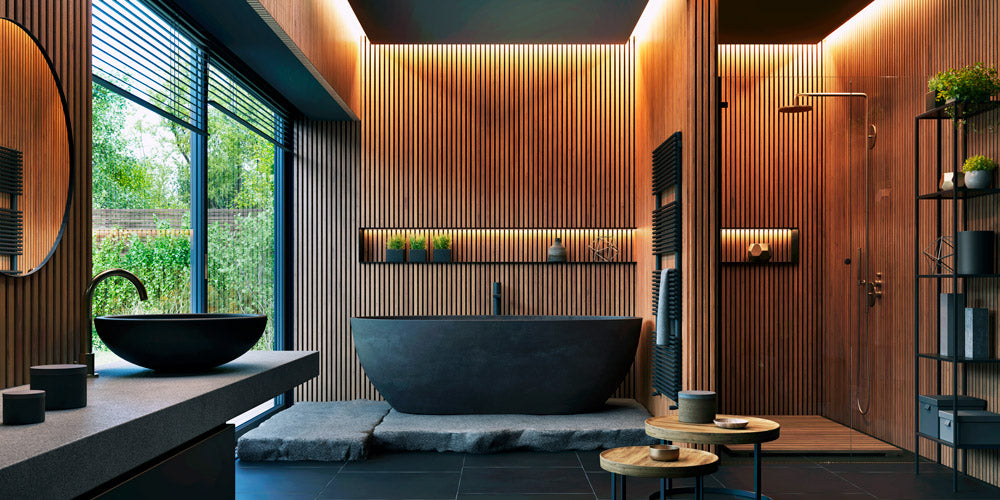
LED strip lights offer a versatile and customizable lighting solution for lighting homes, businesses and outdoor areas. However, there are many technical details in lighting solutions that are worth considering before making a purchase decision. This guide covers the different types of LED strip lights, color tones, power, control methods, installation profiles, pointless strips and transformers, so that you can find the perfect solution for your needs. There is a lot of choice in LED strip lights for different purposes. The properties of the strips vary, for example, according to brightness, color, controllability and moisture resistance. Choosing the right strip depends on the purpose and space for which it is installed. For example, a warm-toned, dimmable strip may be suitable for mood lighting, while a more efficient and cooler light is needed for task lighting. There is a lot of choice in LED strip lights for different purposes.
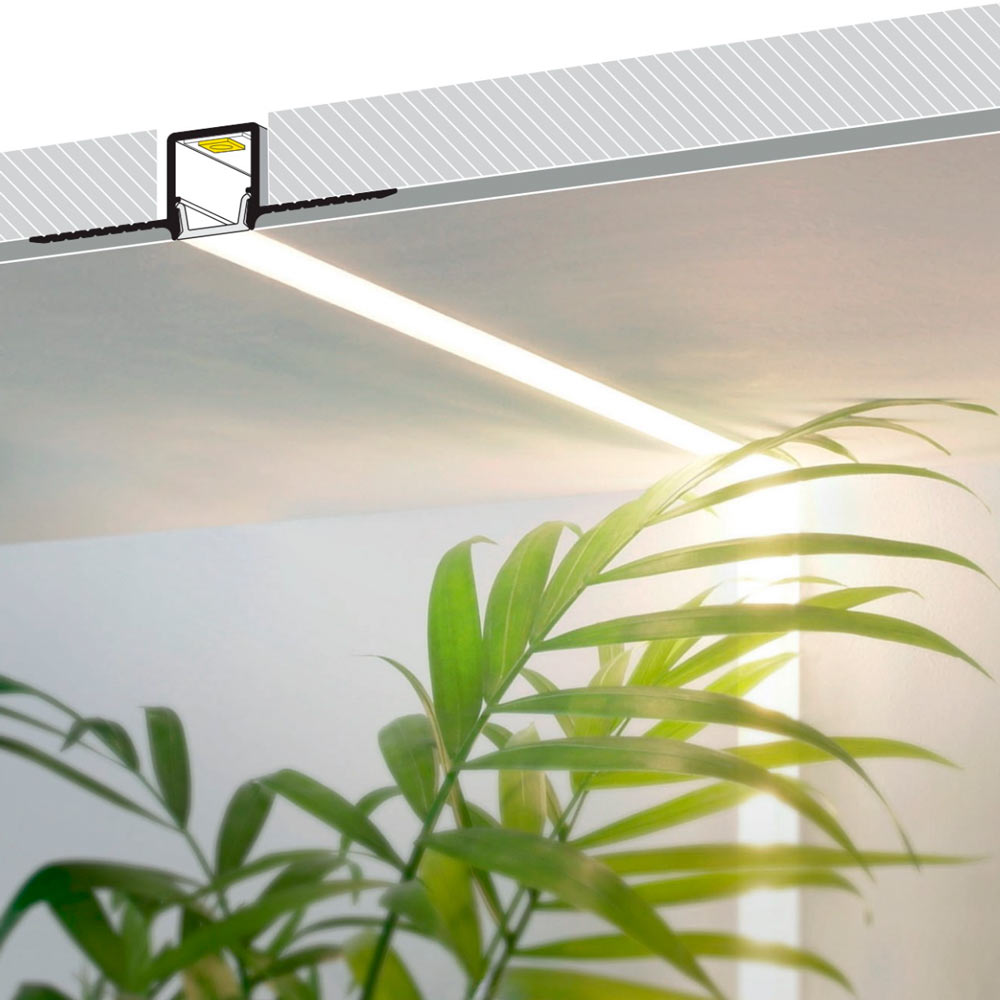
There are several different types of LED strip lights available. Your choice depends on the kind of atmosphere or lighting effect you want to create in your space.
Monochrome strips are simple and effective lighting solutions that provide a single white color tone. They are perfect for general and task lighting, and are usually available in different color temperatures: warm white (2700K–3000K), neutral white (4000K) and cool white (5000K–6000K). Monochrome strips are an excellent choice for lighting kitchen countertops, work areas and bathrooms, for example, where uniform and bright lighting is important.
CCT strips allow you to adjust the color temperature of the light from warm to cool white. This means you can customize the tone of the light to suit your situation and needs. For example, a warmer tone can be used for relaxation and a cooler white for working. CCT strips are ideal for spaces where the lighting needs to adapt to different moods or functions, such as a living room or bedroom.
With multi-colored RGB LED strips, you can create colored lighting. RGB strips have a combination of red, green, and blue, which can be used to create a wide range of colors. RGBW strips also have a separate white LED, which makes them more versatile: you can go from colorful lighting to traditional white lighting. RGB+CCT strips combine both color options and color temperature adjustability, giving you full control over the look and feel of your lighting.
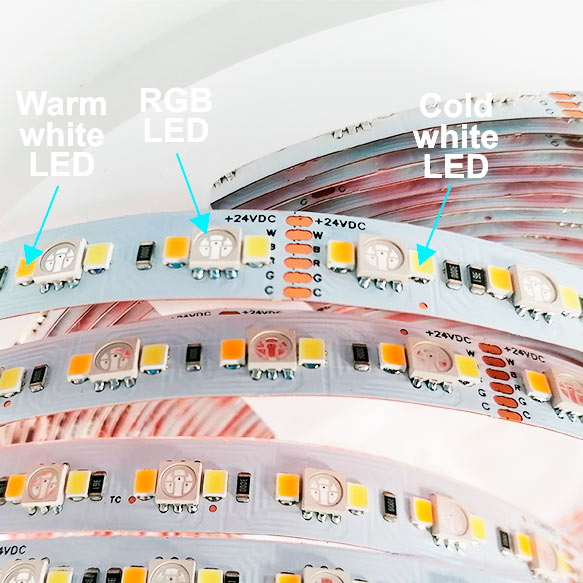
The light output and uniformity of LED strips depend on the number of LED dots in the strip. The denser the LEDs are installed, the more uniform and brighter the light is.
30 LEDs/m : Suitable for background lighting and applications where strong light output is not required.
60 LEDs/m : A good compromise between even and bright light. Suitable for general and accent lighting.
120 LEDs/m or more : Very even and bright light, suitable for lighting work surfaces and workstations, for example.
COB LED strips : The dense LED installation ensures completely spot-free light. These strips are used when a completely uniform light surface without LED spots is desired.
COB (Chip on Board) technology enables very densely placed LED dots, resulting in a uniform and spot-free light. This feature makes COB strips very pleasant to use and gives the light a soft, uniform look. Spot-free COB LED strips are an excellent choice for areas where the strip is installed in a visible position or where spot-free lighting is particularly important, such as mirror lighting, countertop lighting or decorative lighting.
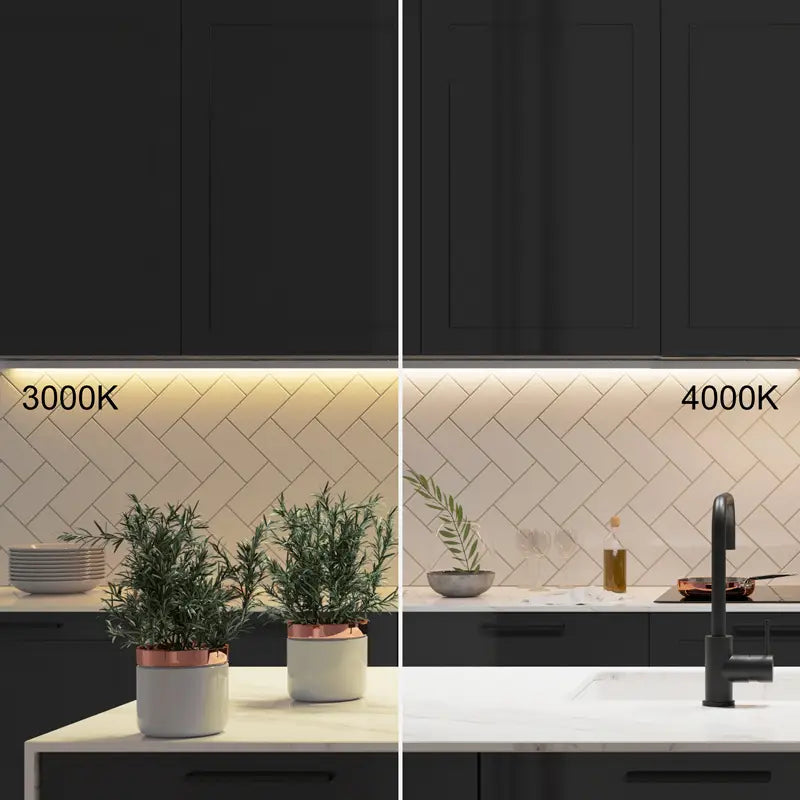
The brightness of an LED strip light is expressed in lumens, which describe the amount of light. The choice of brightness depends on the space and lighting needs:
Color temperature affects the tone of the light. Warm white (2700–3000K) provides a soft and cozy light, neutral white (4000K) works for general lighting and more modern lighting, and cool white (5000–6000K) is suitable for spaces where precise and bright lighting is needed. Color temperature adjustable (CCT) LED strips allow you to adjust the color temperature according to your needs.
Read more about color temperatures, or Kelvins, in our color temperature guide .
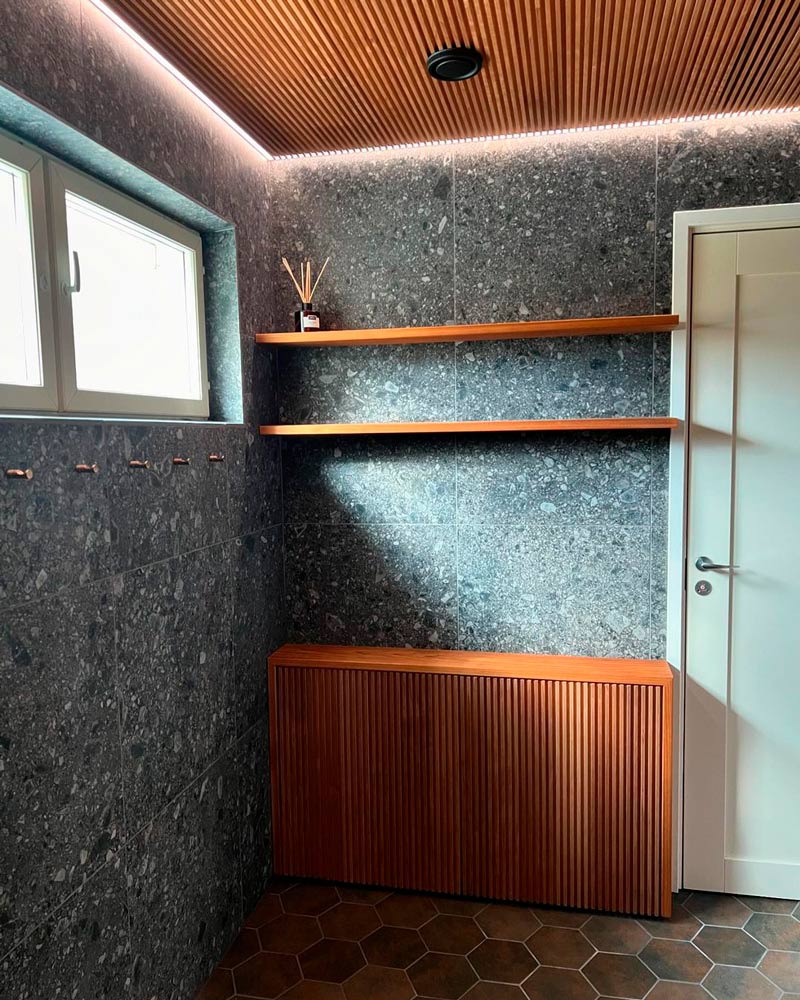
Waterproof LED strips (IP65 or IP67) are ideal for damp and wet spaces, such as bathrooms, saunas and outdoor use. IP20-rated strips can be used indoors. Ensure the conditions of the installation site and choose the appropriate protection class for the strip so that it can withstand the requirements of the space. Valotehdas LED light strips have options for every space:
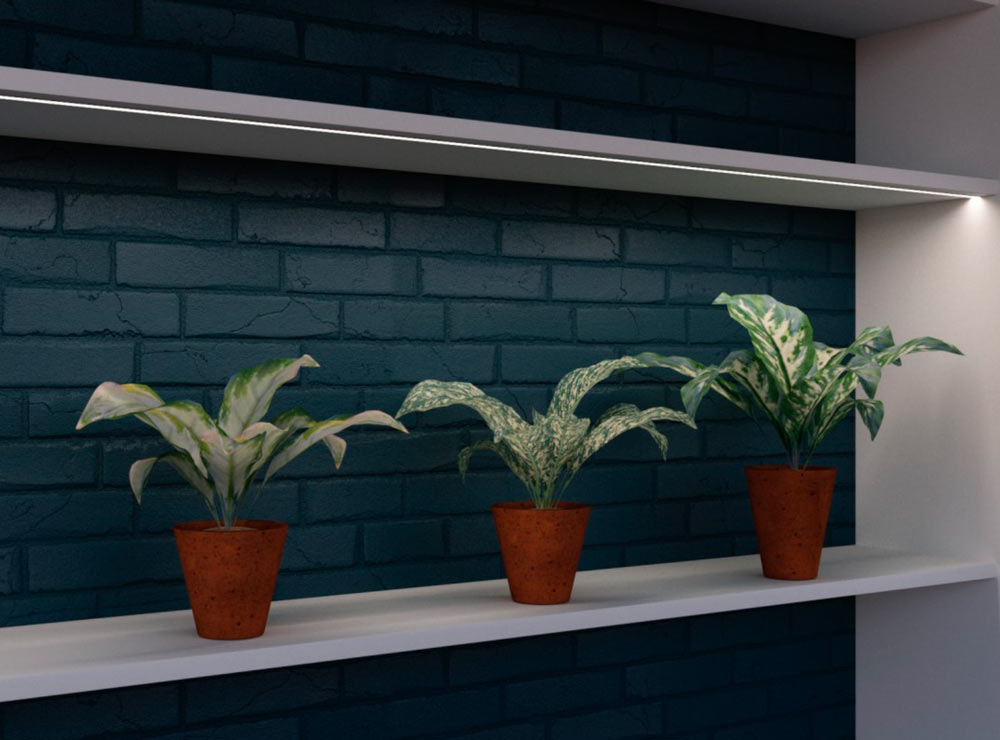
LED profiles improve the appearance of the LED strip, protect it and ensure a more even light distribution. The right profile increases the durability of the installation and allows for a neat finish. The height and type of profile affect whether the LED dots are visible and how the light is distributed in the space. The following factors influence the choice of profile:
Surface profiles
Surface profiles are popular because they can be attached directly to the mounting surface. This type of profile is easy to install and is well suited for spaces where the LED strip does not need to be recessed or hidden, such as kitchen countertops, shelf bases and ceiling ledges.
Countersunk profiles
Recessed profiles are recessed into the surface, allowing them to blend seamlessly into, for example, ceiling or wall panels. Recessed profiles create a clean and unobtrusive look, and are particularly suitable for minimalist spaces. They require more installation work, as the installation surface often has to be cut to the profile dimensions. Recessed profiles are an ideal solution for applications where the light is desired to be even but unobtrusive.
Corner profiles
Corner profiles are designed to be installed, for example, in the corners of cabinets or on the edges of walls and ceilings. Corner profiles usually distribute light at an angle of 45 degrees, which makes them an excellent choice for areas where you want to direct light in a specific direction. Corner profiles are well suited, for example, for workspaces or display windows where you want to focus light on a specific point.
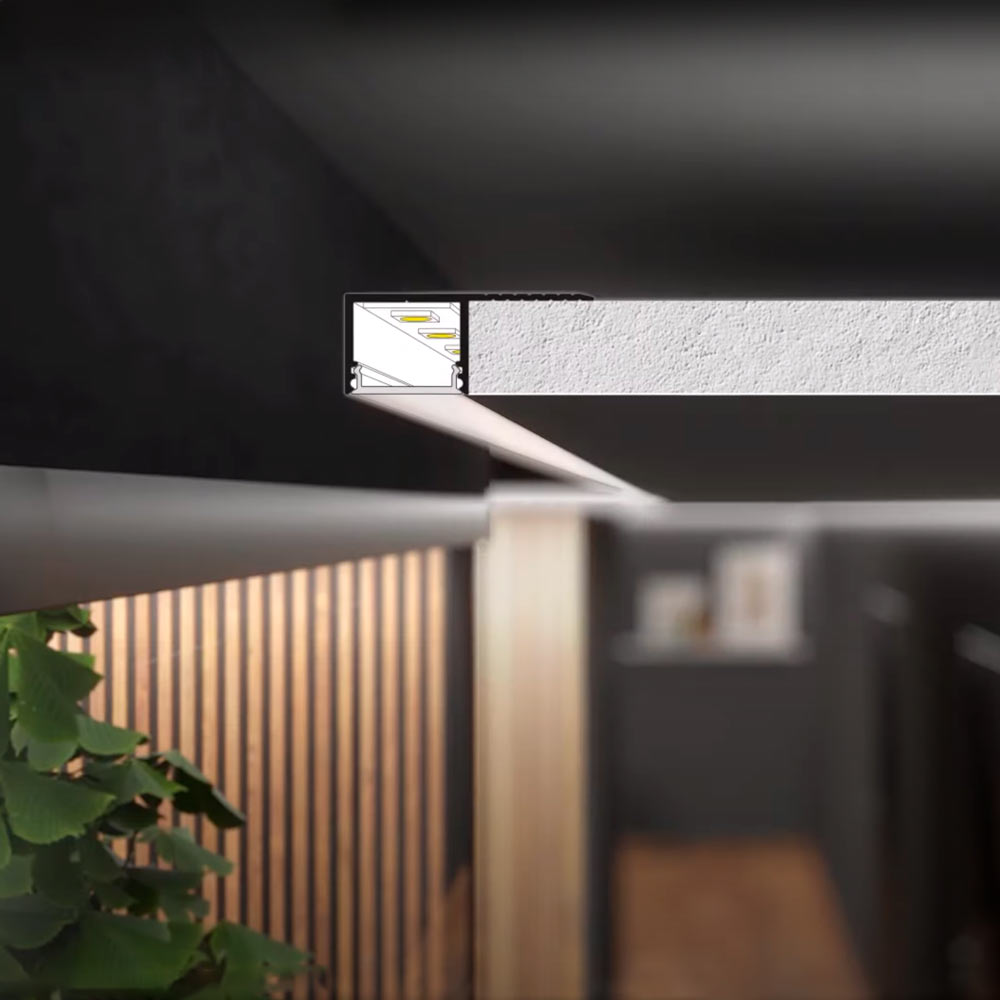
The height of the profile affects whether the LED dots are visible or not, which is especially important for strips with a low number of LED dots:
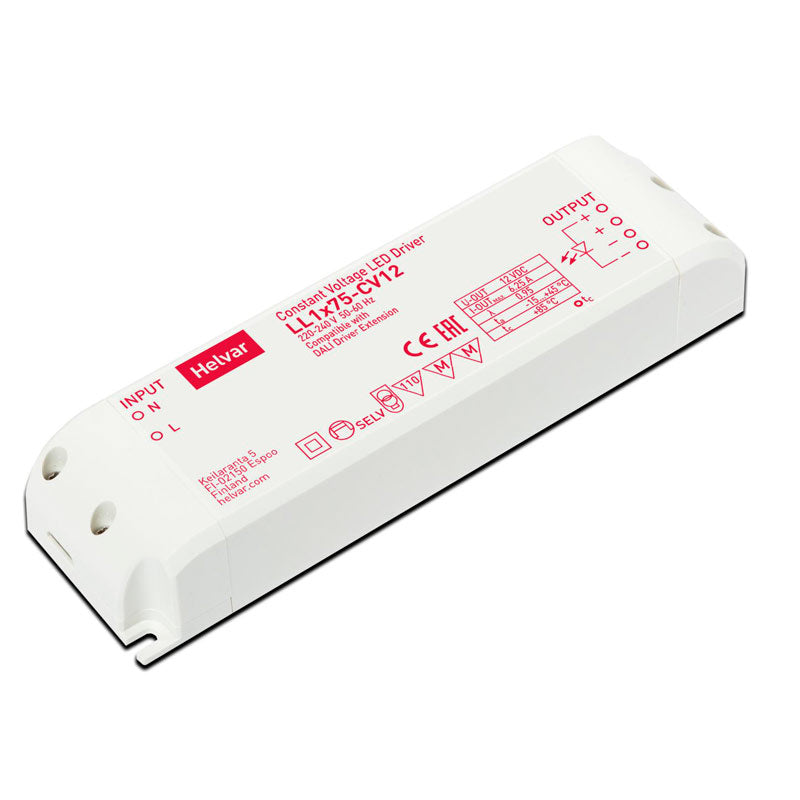
The right transformer is an important part of the functionality and durability of your LED strip light. Choose a transformer that matches the voltage and control needs of your strip. The transformer's power reserve should be about 20–30% higher than the calculated power requirement of your LED strip. This will help keep the transformer cool and extend its lifespan.
For example, if the power of the strip is 12 W/m 24V and its length is 5m, the required power is 60W. In this case, it is worth choosing a transformer of at least 75W 24V or higher.
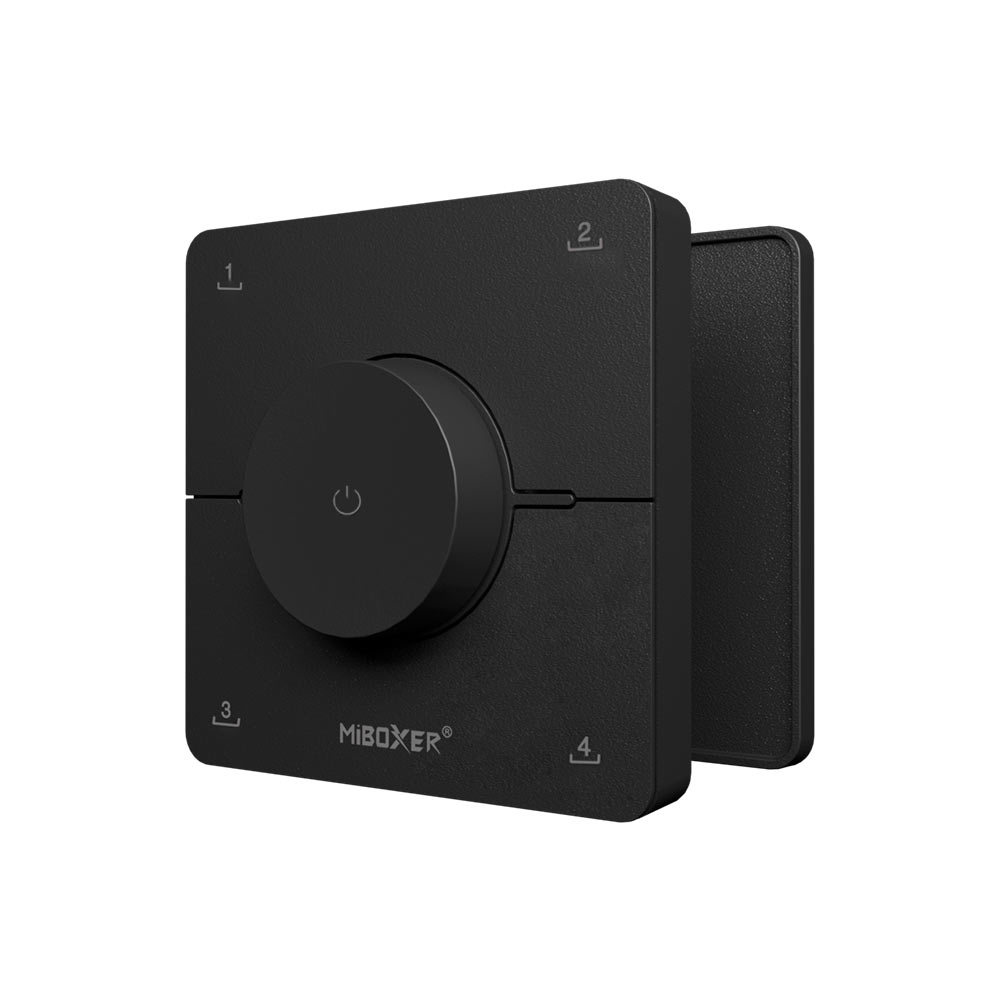
LED strip control options vary depending on the type of strip. Single-color strips can be connected to a simple dimmer, while CCT and RGBW strips require a special controller. RGB+CCT strips allow you to adjust the color temperature and colors of the light separately, which provides more possibilities to create the desired atmosphere. LED strip lights can be controlled in many different ways, and choosing the right control system depends on your needs and the technical requirements of the space. Here are the most common control options:
These control options allow you to control the brightness, color temperature, and color tones of the LED strip light according to the requirements of your space.
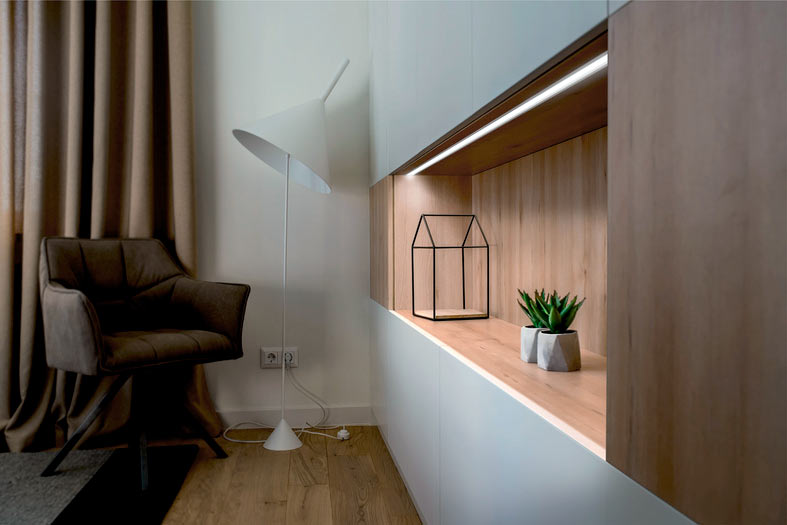
Discover creative ways to install LED strip lights and get inspired by other implementations. In the Light Factory gallery you will find examples that will help you design your own lighting. Whether it is simple accent lighting or a complex whole, LED strip lights offer flexible possibilities for implementation.
Check out our other guides and articles on LED lighting and LED strip lighting solutions for more detailed instructions, inspiration, and useful tips on implementing LED lighting in different spaces and applications.
If you need further assistance in choosing the right LED strip light or installation accessories, our customer service team is happy to help . Our professional team will guide you to find the perfect solution for your needs and provide additional information on product features, control and installation.